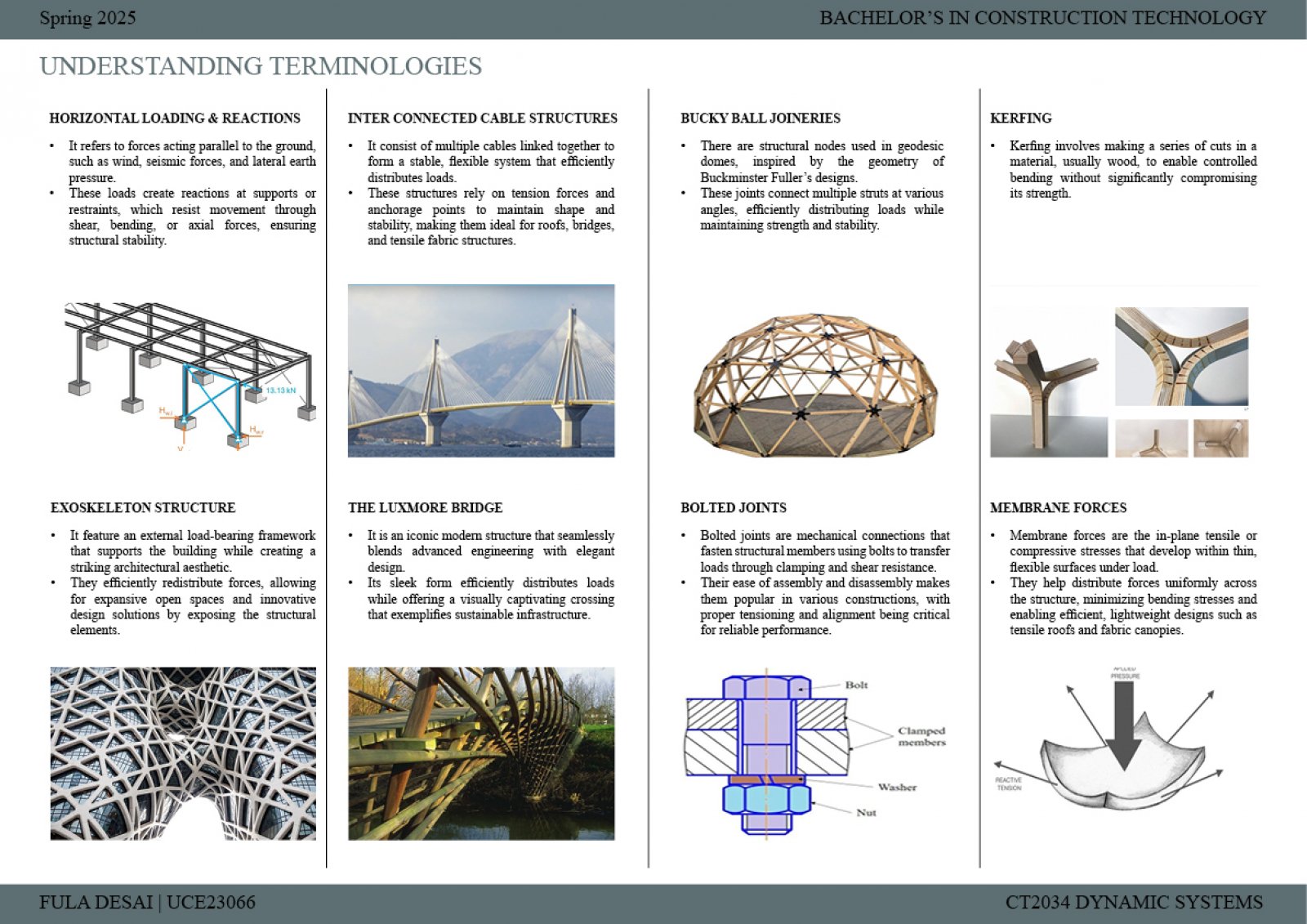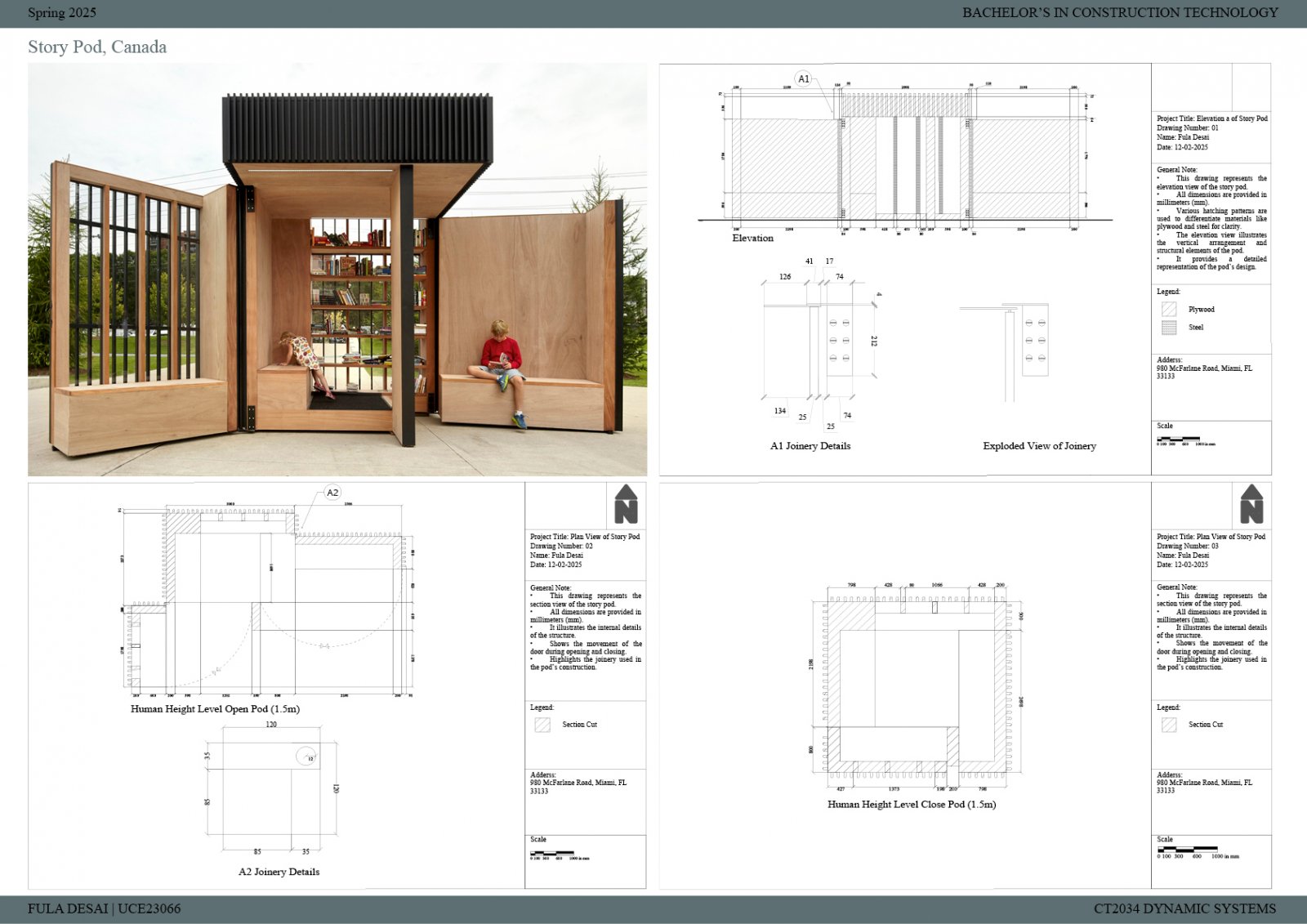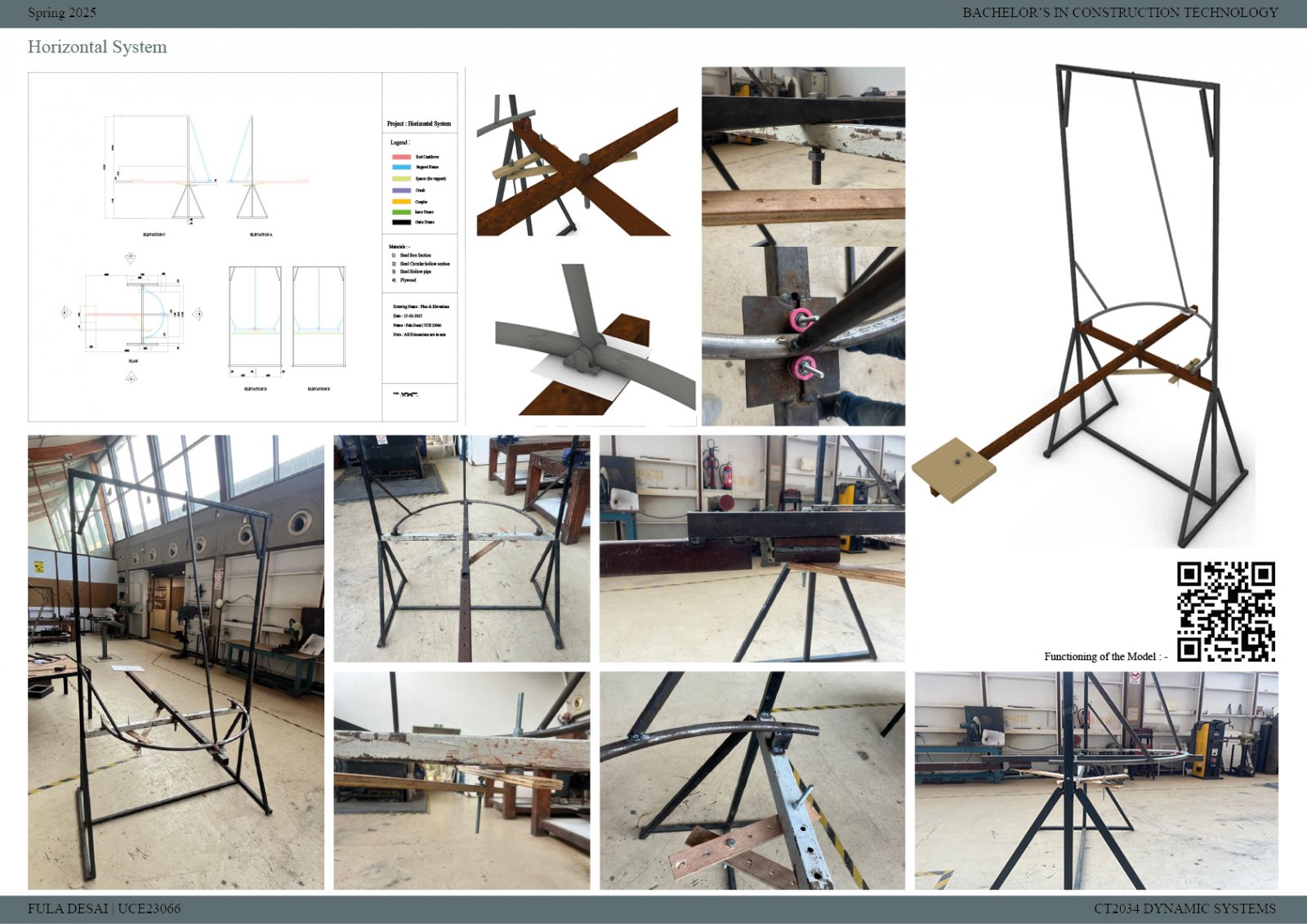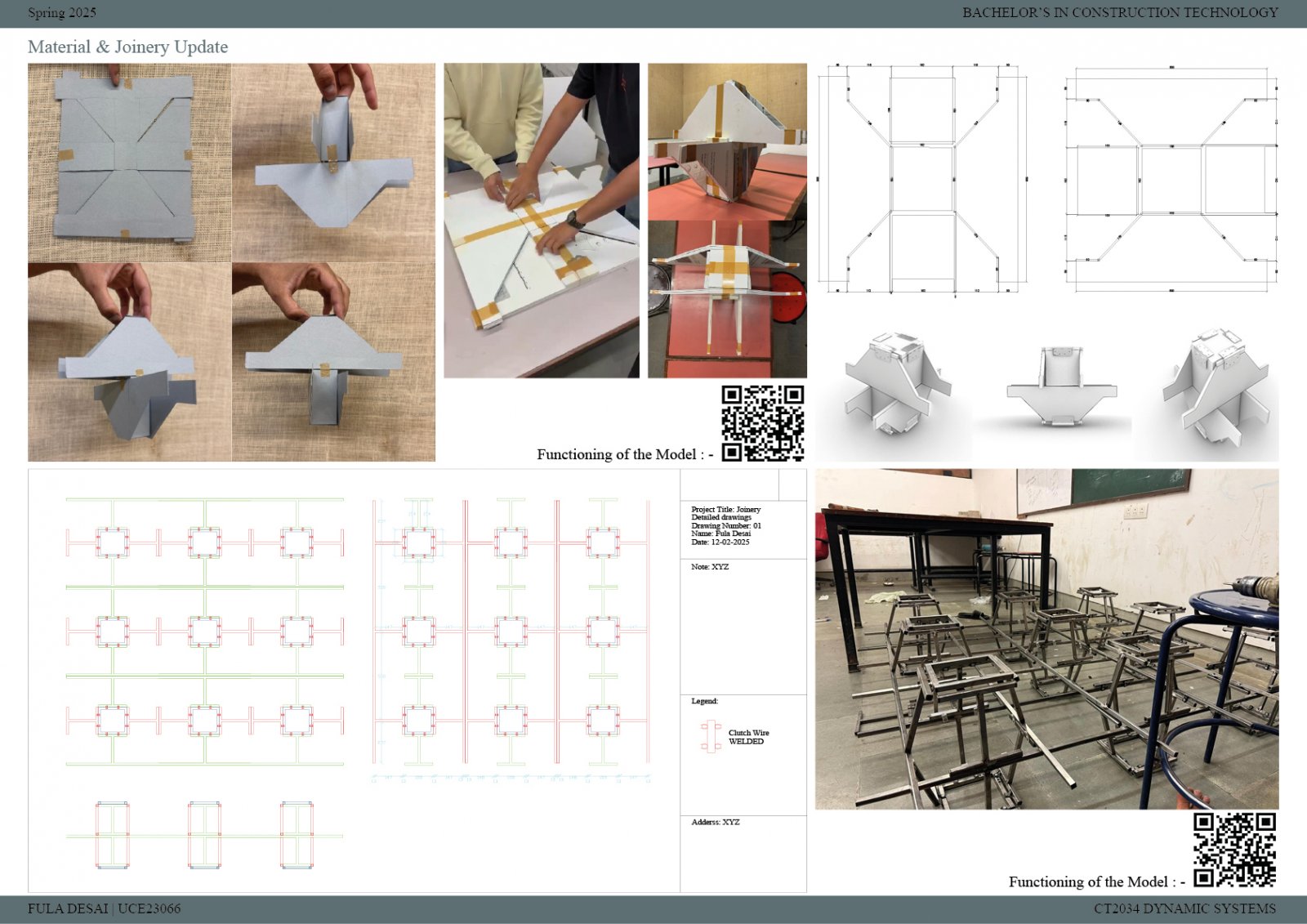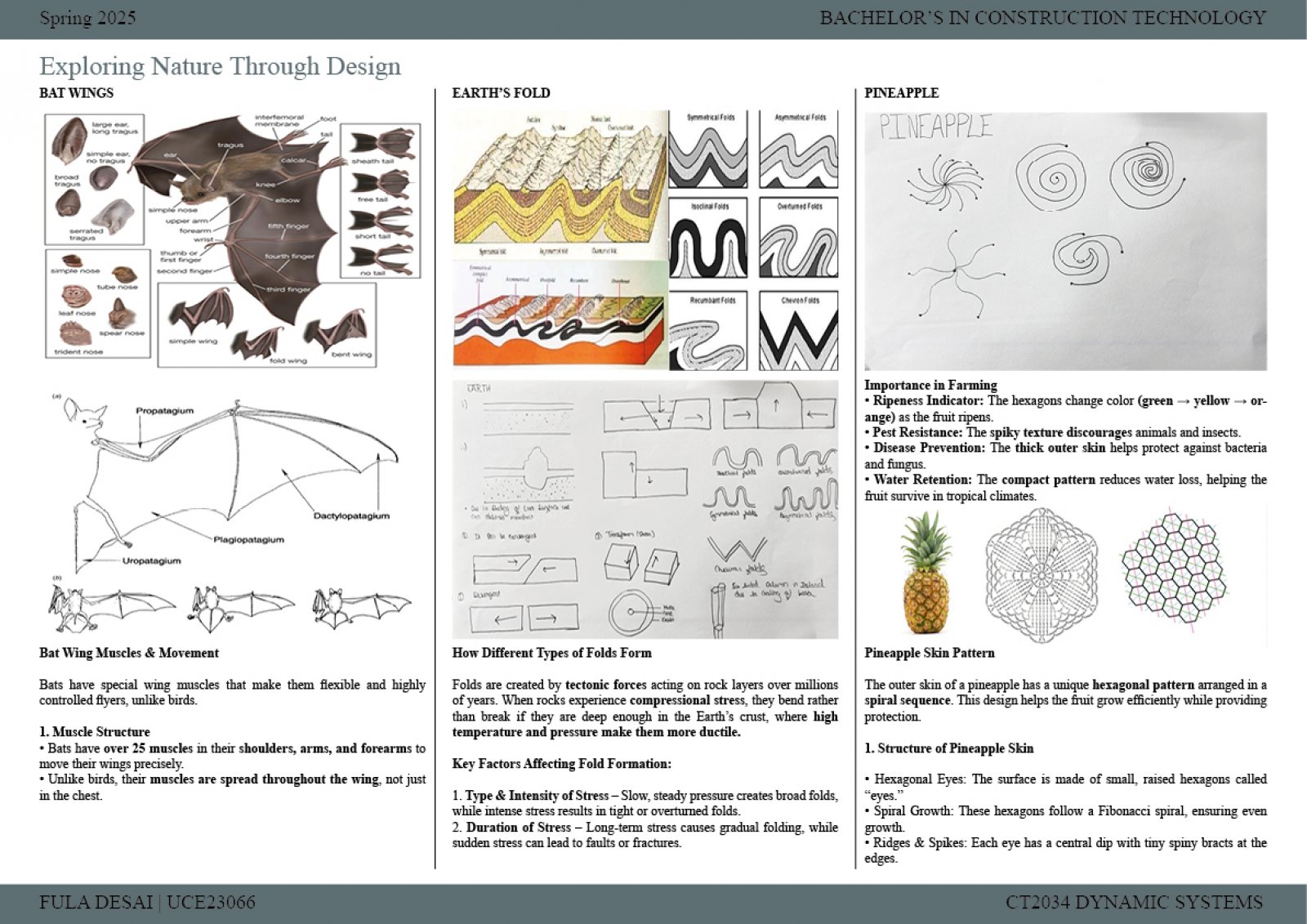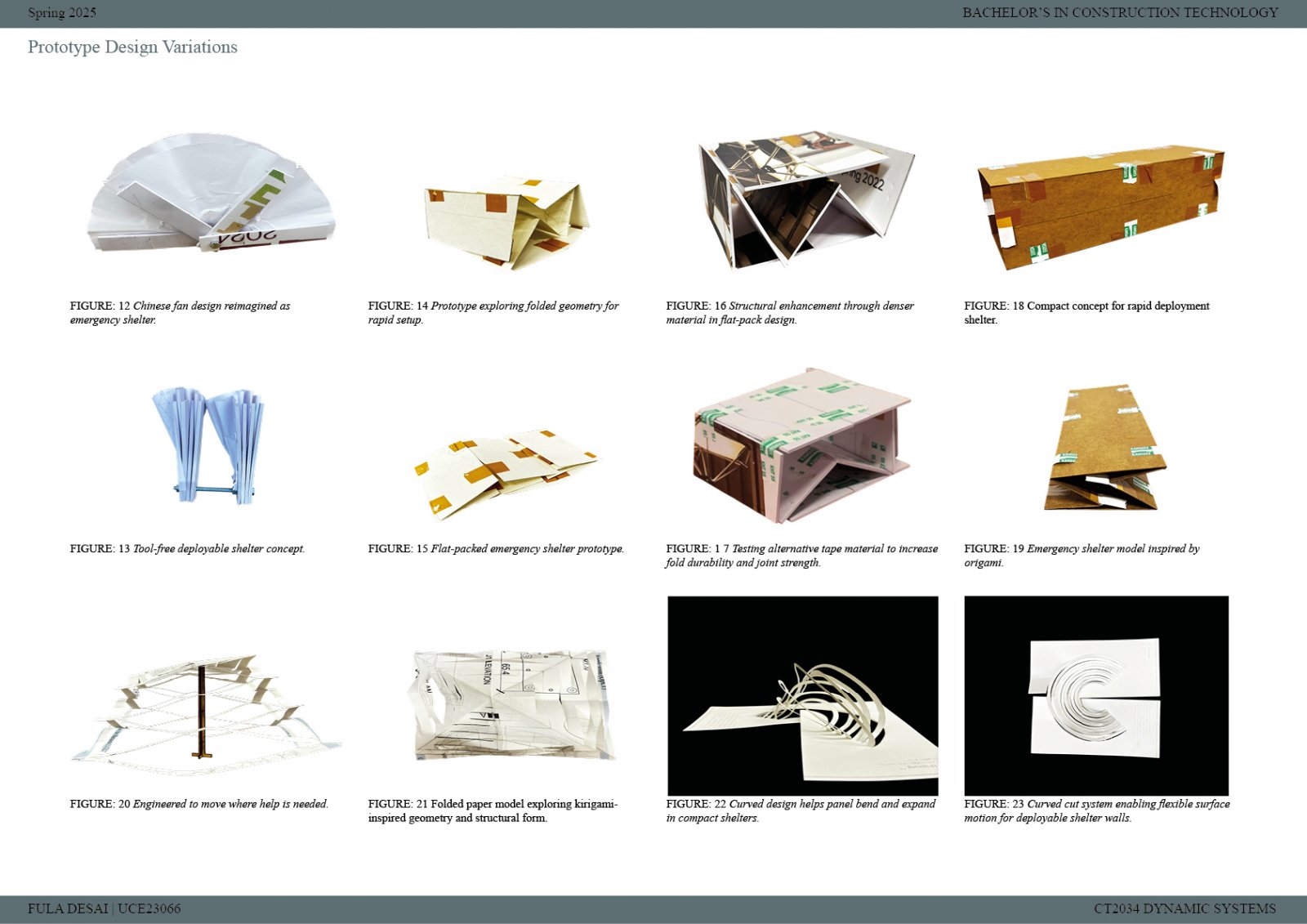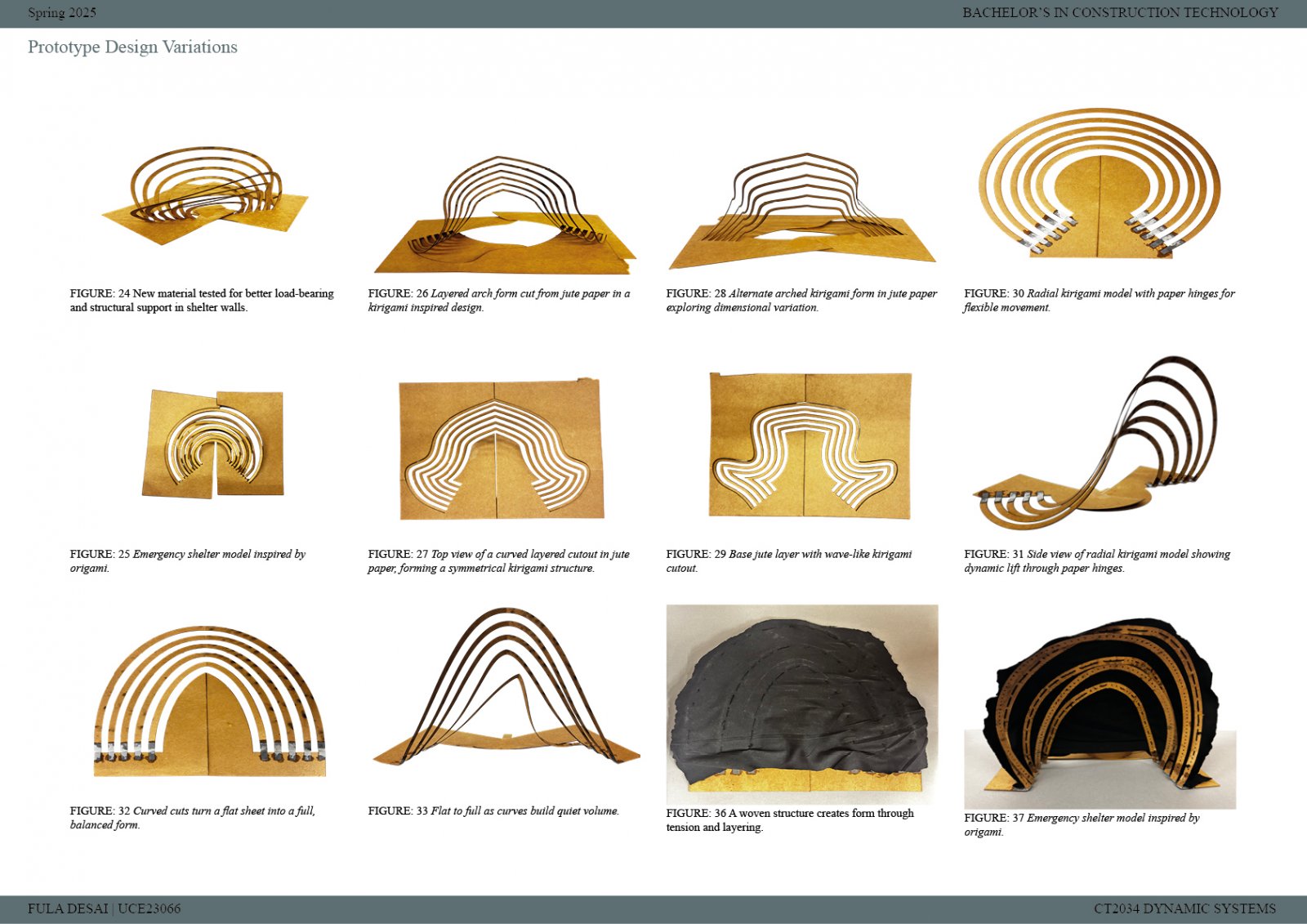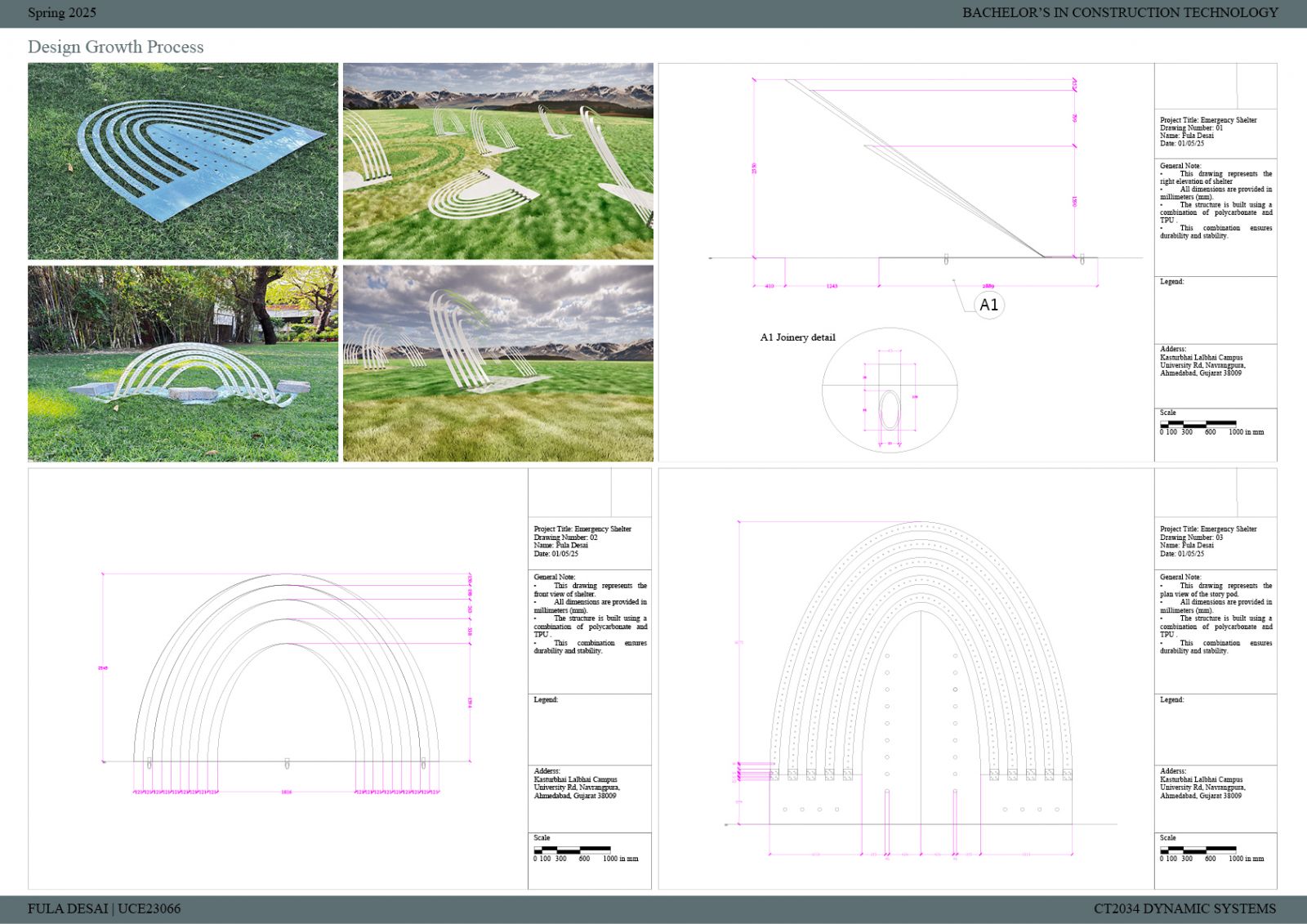Your browser is out-of-date!
For a richer surfing experience on our website, please update your browser. Update my browser now!
For a richer surfing experience on our website, please update your browser. Update my browser now!
This project explores the design of an adaptable emergency shelter inspired by natural patterns, particularly folds in mountainous terrain. Initially using FRP square pipes and fabric for lightweight, transportable structures, the design evolved through iterative model-making and AI-assisted scenario-based thinking. The final system incorporates polycarbonate for transparency, durability, and efficiency. Focused on quick assembly, affordability, and user dignity, the shelter was refined through prototypes, material tests, and joint detailing. The outcome is a scalable, climate-responsive solution for temporary housing in disaster or displacement situations, supported by 2D drawings and 3D visualizations.
View Additional Work